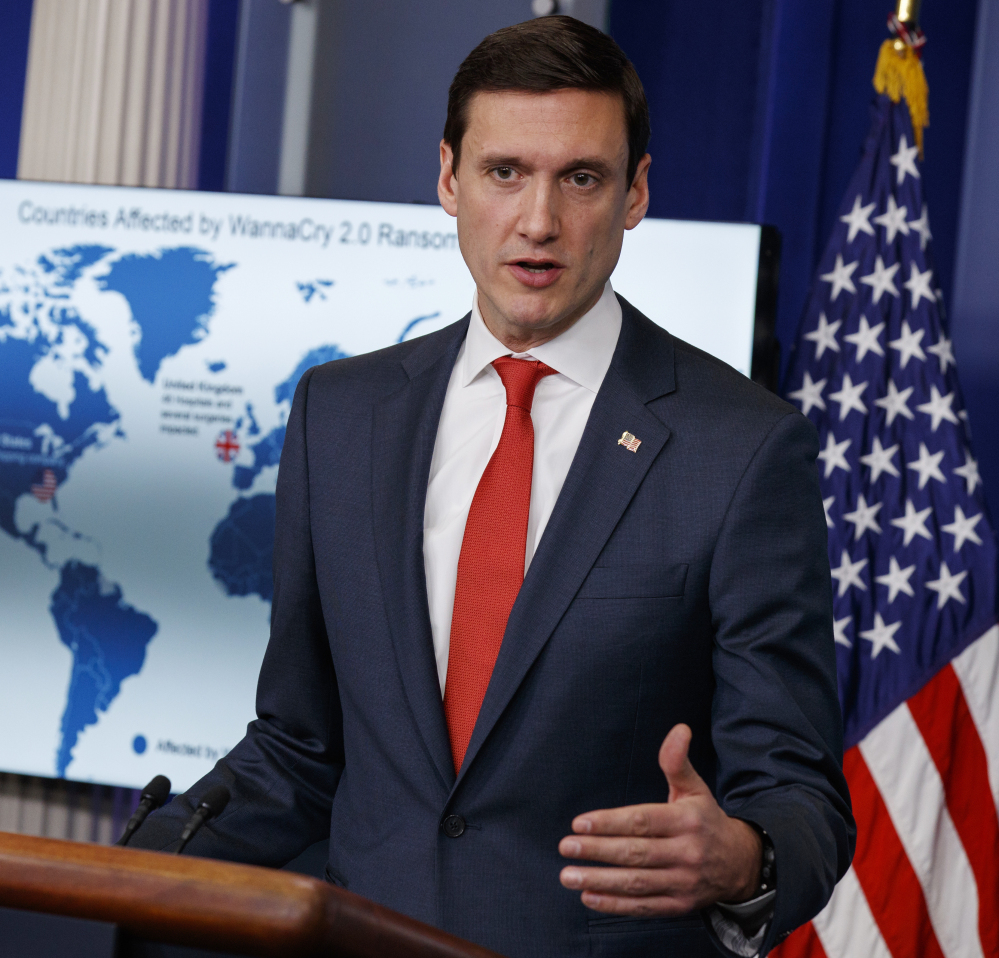WASHINGTON — President Trump’s administration is publicly blaming North Korea for a ransomware attack that infected hundreds of thousands of computers worldwide in May and crippled parts of Britain’s National Health Service.
Homeland security adviser Tom Bossert wrote in a Wall Street Journal op-ed published Monday night that North Korea was “directly responsible” for the WannaCry ransomware attack and that Pyongyang will be held accountable for it.
Bossert said the administration’s finding of responsibility is based on evidence and confirmed by other governments and private companies, including the United Kingdom and Microsoft.
“North Korea has acted especially badly, largely unchecked, for more than a decade, and its malicious behavior is growing more egregious. WannaCry was indiscriminately reckless,” he wrote.
Bossert said the Trump administration will continue to use its “maximum pressure strategy to curb Pyongyang’s ability to mount attacks, cyber or otherwise.”
The WannaCry attack struck more than 150 nations in May, locking up digital documents, databases and other files and demanding a ransom for their release.
It battered Britain’s National Health Service, where the cyberattack froze computers at hospitals across the country, closing emergency rooms and bringing medical treatment to a halt. Government offices in Russia, Spain, and several other countries were disrupted, as were Asian universities, Germany’s national railway and global companies such as automakers Nissan and Renault.
The WannaCry ransomware exploited a vulnerability in mostly older versions of Microsoft’s Windows operating system. Affected computers had generally not been patched with security fixes that would have blocked the attack. Security experts, however, traced the exploitation of that weakness back to the U.S. National Security Agency; it was part of a cache of stolen NSA cyberweapons publicly released by a group of hackers known as the Shadow Brokers.
Microsoft president Brad Smith likened the theft to “the U.S. military having some of its Tomahawk missiles stolen,” and argued that intelligence agencies should disclose such vulnerabilities rather than hoarding them.
WannaCry came to a screeching halt thanks to enterprising work by a British hacker named Marcus Hutchins, who discovered that the malware’s author had embedded a “kill switch” in the code. Hutchins was able to trip that switch, and the attack soon ended. In an unusual twist, Hutchins was arrested months later by the FBI during a visit to the U.S.; he pleaded not guilty and now awaits trial on charges he created unrelated forms of malware.
The United States and South Korea have accused North Korea of launching a series of cyberattacks in recent years, though the North has dismissed the accusations.
A South Korean lawmaker in October said North Korean hackers stole highly classified military documents that include U.S.-South Korean wartime “decapitation strike” plans against the North Korean leadership.
Copy the Story LinkSend questions/comments to the editors.



Success. Please wait for the page to reload. If the page does not reload within 5 seconds, please refresh the page.
Enter your email and password to access comments.
Hi, to comment on stories you must . This profile is in addition to your subscription and website login.
Already have a commenting profile? .
Invalid username/password.
Please check your email to confirm and complete your registration.
Only subscribers are eligible to post comments. Please subscribe or login first for digital access. Here’s why.
Use the form below to reset your password. When you've submitted your account email, we will send an email with a reset code.